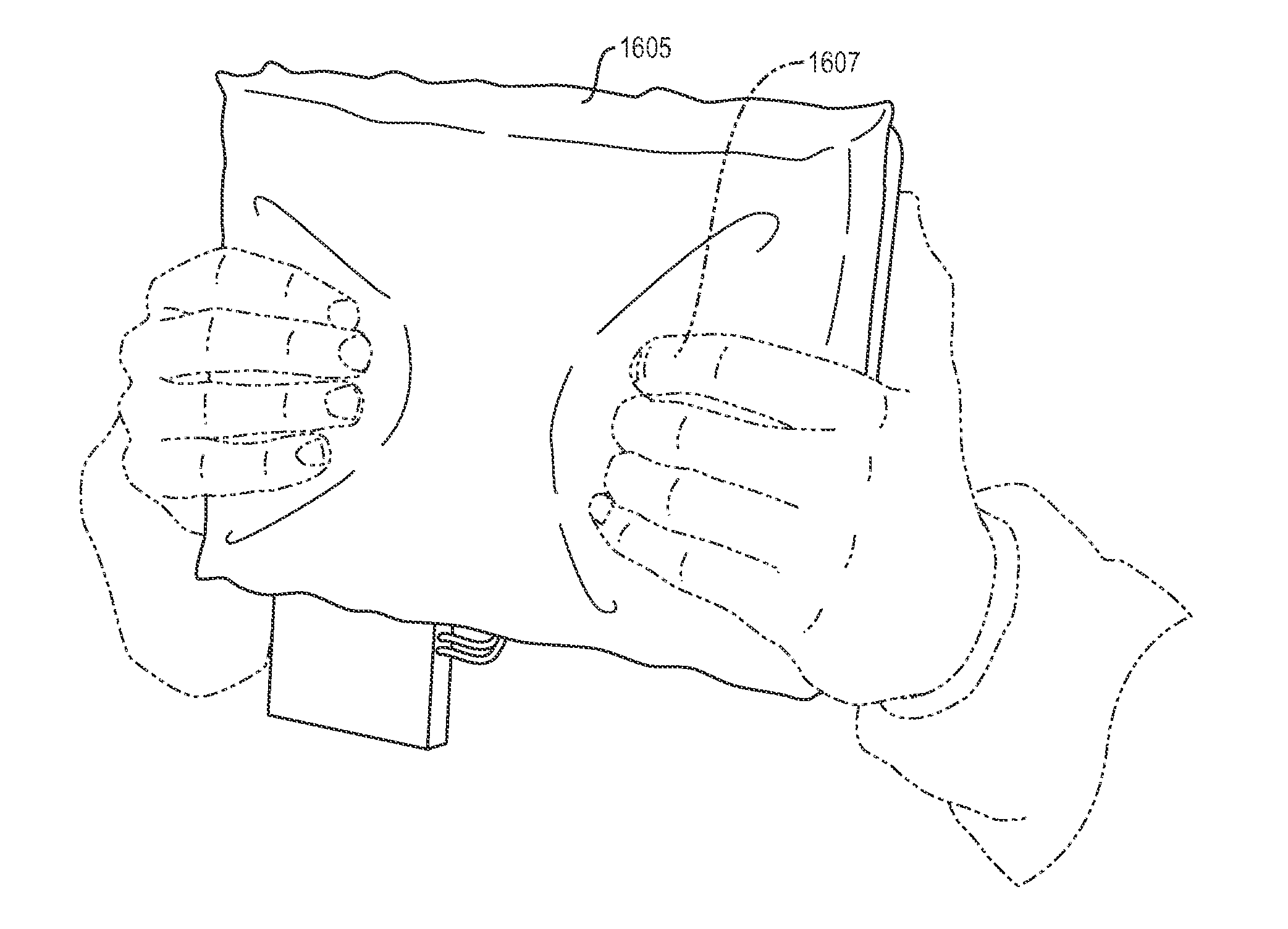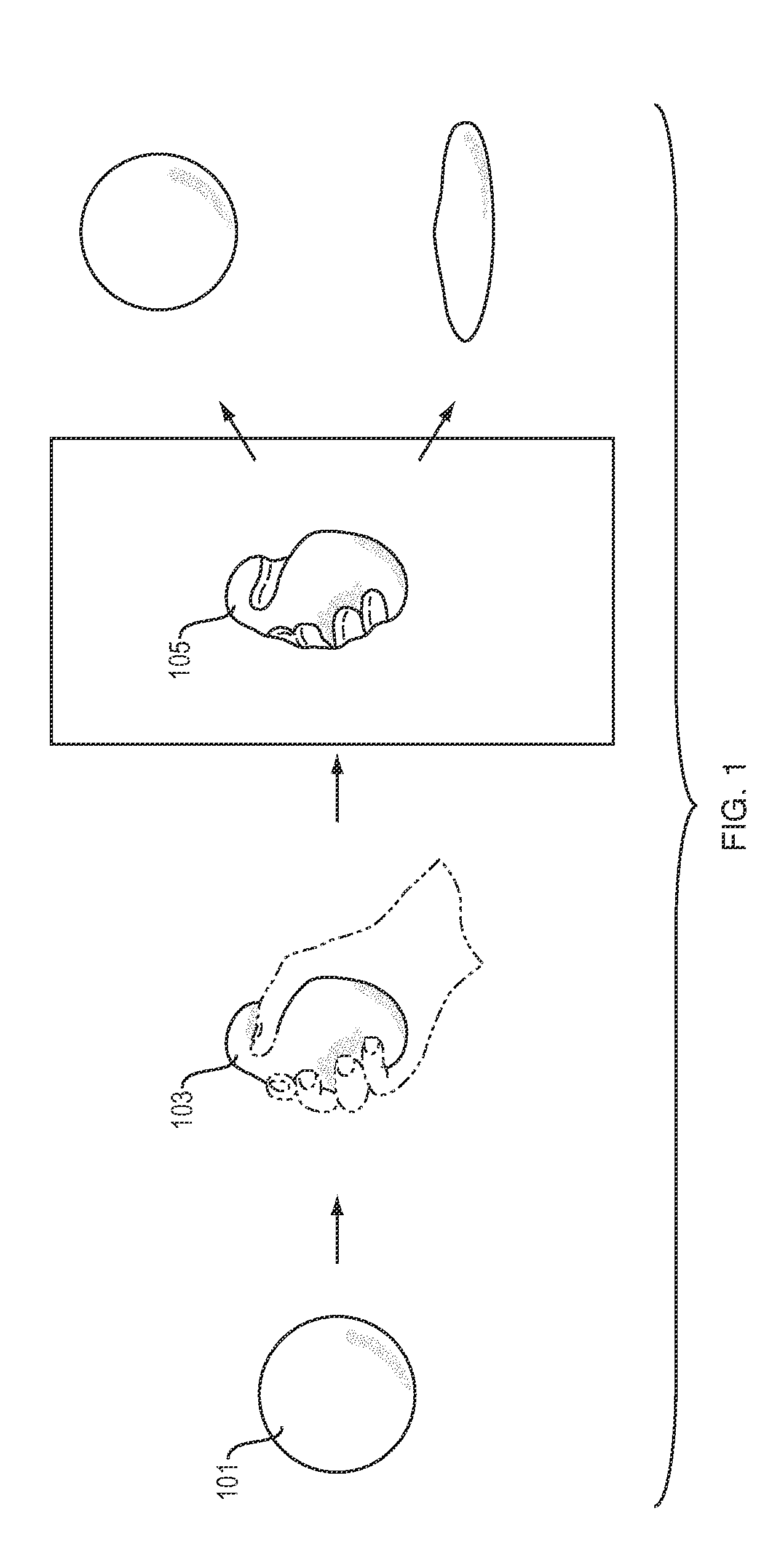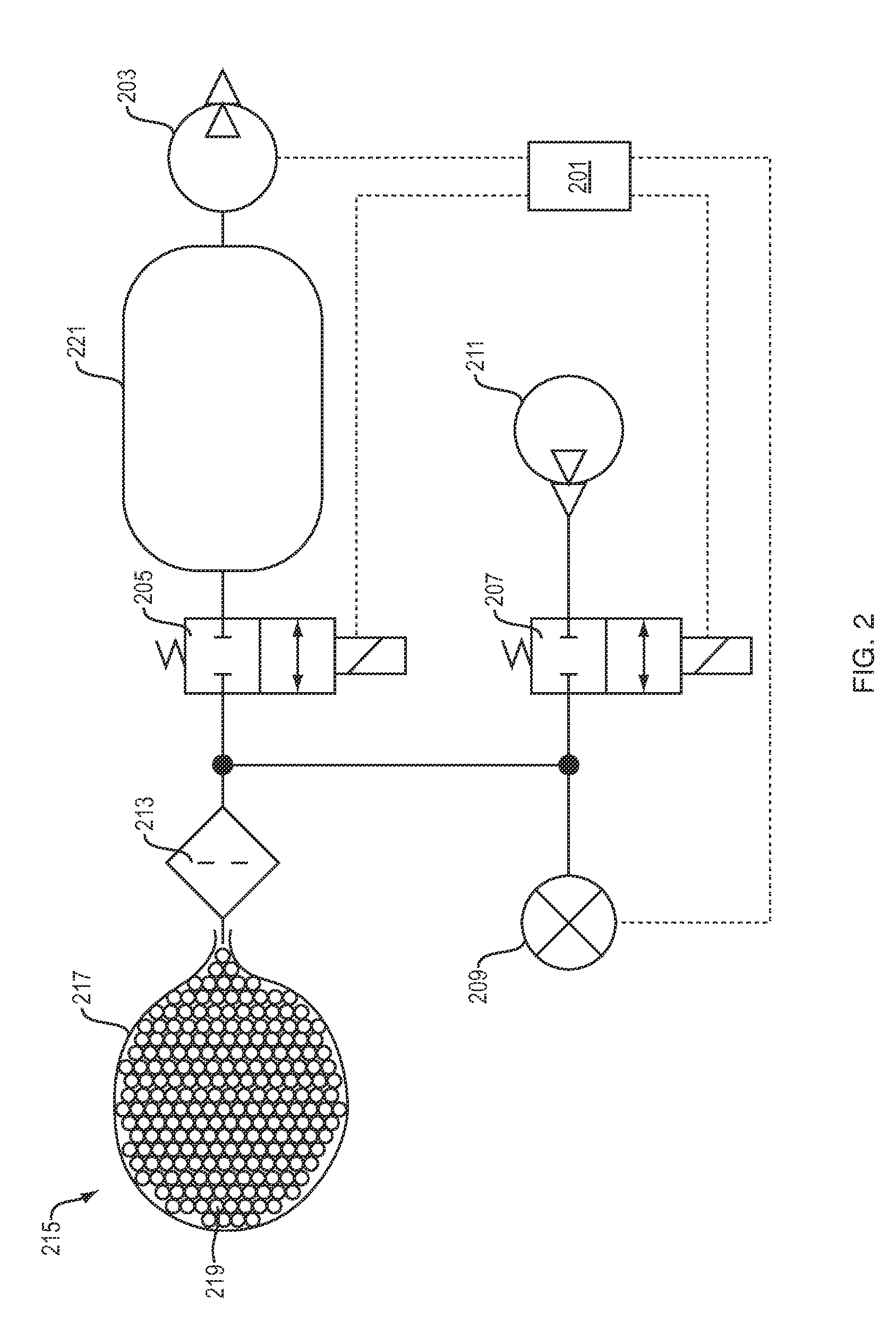Methods and Apparatus for Jammable HCI Interfaces
a technology of hci interfaces and jammable media, applied in the field of jammable hci interfaces, can solve the problems of jamming of jammable media (becoming rigid), unjamming of “lens” and extremely soft, and hardening of “lens”
- Summary
- Abstract
- Description
- Claims
- Application Information
AI Technical Summary
Benefits of technology
Problems solved by technology
Method used
Image
Examples
example 1
Tablet Jamming Device
[0083]A prototype of this invention is sometimes called a “Tablet Jamming Device”. In this prototype, a jammable device is mounted on the back surface of a tablet computer. FIG. 16A shows a front view of the tablet. A user can hold the tablet case 1601 with the user's hands, while watching a screen 1603 on the front of the tablet. The user's fingertips can press into a malleable jammable device 1605 mounted on the back of the tablet. FIG. 16B shows a back view of the tablet. The user can press the user's fingers (e.g., 1607) into the malleable jammable device 1605 in order to provide input to the tablet. Changing stiffness of the malleable device can provide haptic feedback to the user.
[0084]The tablet case has an embedded jamming apparatus and capacitive shape deformation sensor for malleable interaction in the back of the tablet. The tablet's rear interface allows users to navigate content on a tablet display by pressing into its malleable surface. For example...
example 2
Tunable Clay
[0086]Another prototype of this invention is sometimes called “Tunable Clay”. This prototype comprises a 30×33 cm2 malleable input device mounted on a tabletop and used for 3D modeling. The prototype can mimic the malleability of clay, which is a continuous material that users can easily deform. In the Tunable Clay prototype, optical sensing—achieved using structured light through the back of the transparent, hydraulic-activated jamming volume—captures the shape in real-time and applies it to a virtual 3D model. The model is shown both on a separate display and through projected graphics on the malleable surface for direct feedback. The sensing and visible projection is integrated beneath the surface to avoid occlusions from user interactions.
[0087]Users can control the stiffness of the malleable surface using a potentiometer. This allows users to modify the resolution of manual input, thereby modifying the interface's control gain. A user can increase the stiffness of t...
example 3
Haptic Lens
[0088]Another prototype of this invention is sometimes called a “Haptic Lens”. The Haptic Lens allows a user to feel the stiffness of an underlying region in which an image is displayed. The Haptic Lens uses varying material stiffness as a haptic information channel. It comprises a round metal ring with a transparent base and a soft transparent upper skin (Dragon Skin® 10, available from Smooth-On, Inc., Easton, Pa.) that is tracked on a tabletop display. A jammable volume is positioned between the transparent base and transparent upper skin. A user can feel the apparent stiffness of parts of images by moving and pressing into the jammable ‘lens”. An object's haptic information channel is represented using 8-bit stiffness values in the alpha channel of the texture. By controlling the degree of jamming inside the lens, the stiffness perceived by the user can vary between a solid object and a liquid.
[0089]The jamming device is transparent and controlled hydraulically. The j...
PUM
 Login to View More
Login to View More Abstract
Description
Claims
Application Information
 Login to View More
Login to View More - R&D
- Intellectual Property
- Life Sciences
- Materials
- Tech Scout
- Unparalleled Data Quality
- Higher Quality Content
- 60% Fewer Hallucinations
Browse by: Latest US Patents, China's latest patents, Technical Efficacy Thesaurus, Application Domain, Technology Topic, Popular Technical Reports.
© 2025 PatSnap. All rights reserved.Legal|Privacy policy|Modern Slavery Act Transparency Statement|Sitemap|About US| Contact US: help@patsnap.com



